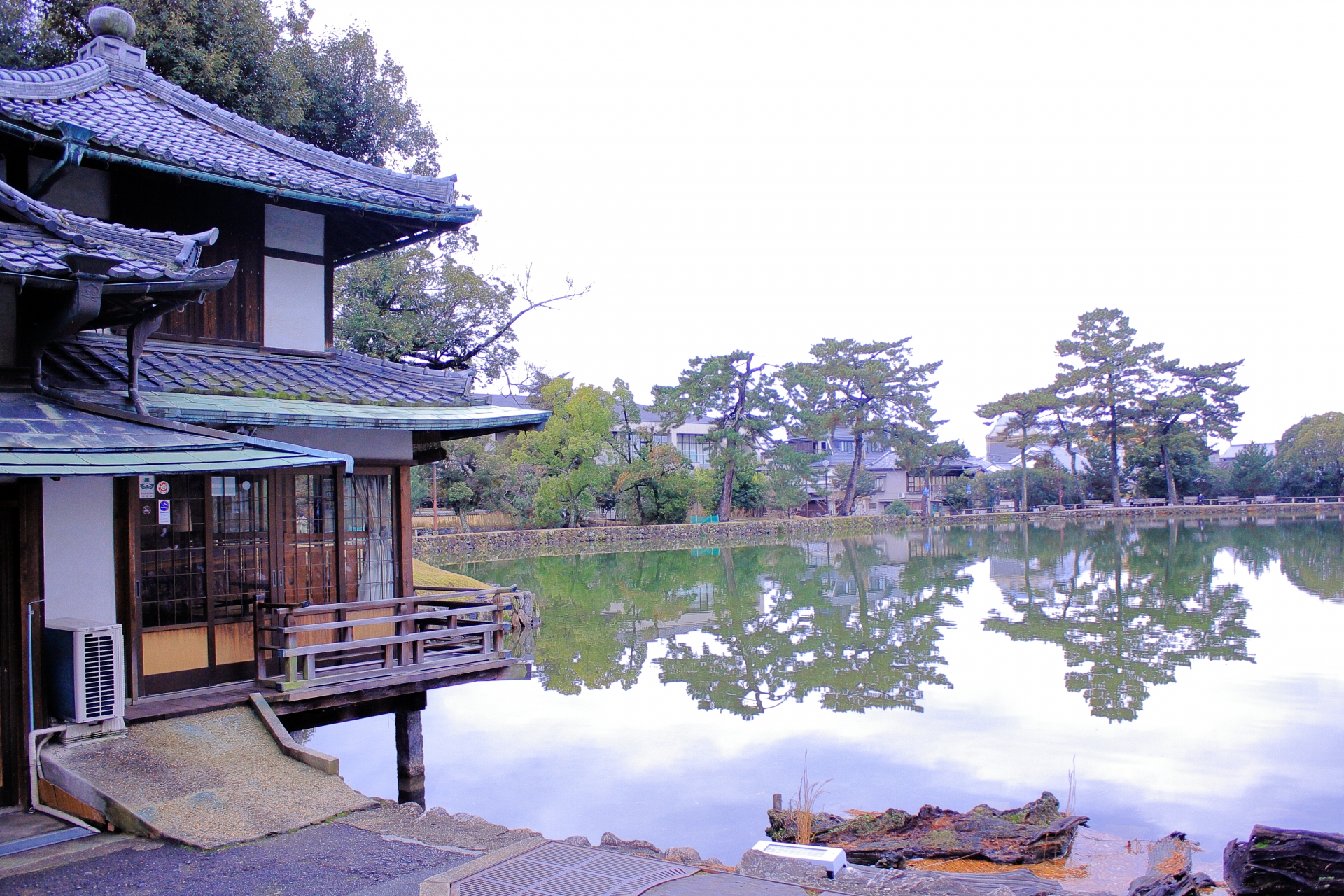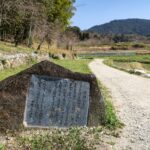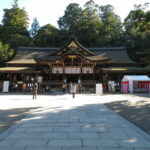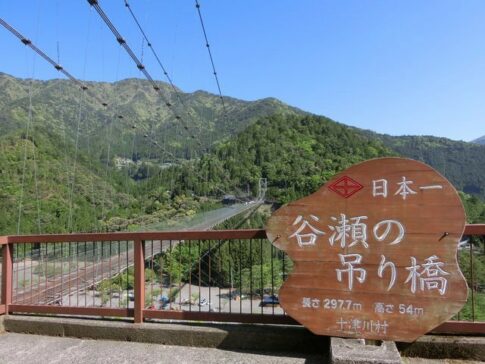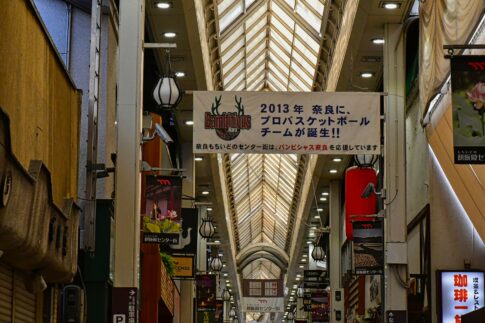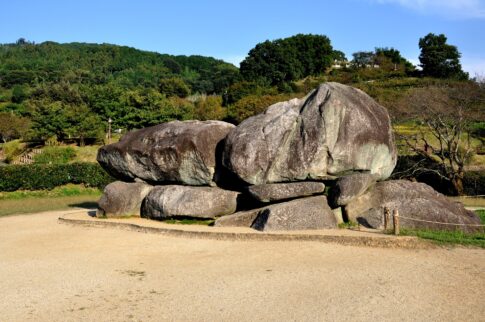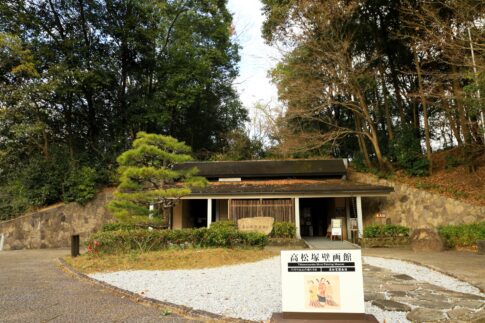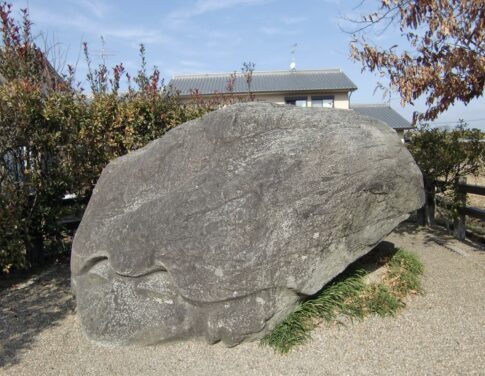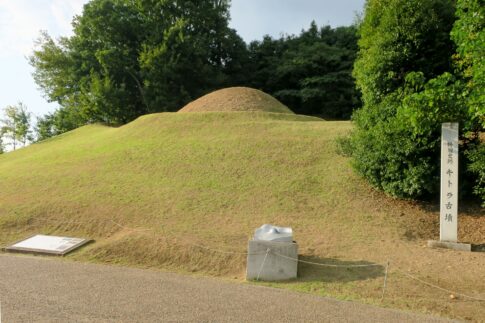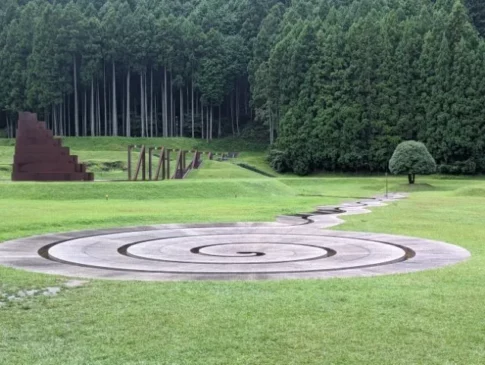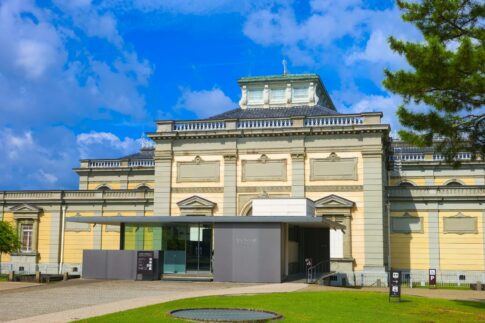Sarusawa Pond is a pond with a circumference of 360 meters located in Nara Park.
The reflection of the five-story pagoda of Kofukuji Temple on the surface of the water, together with the surrounding willows, is a beautiful sight and is one of Nara’s eight scenic spots. When you visit Nara, we recommend to visiting there.
What you need to know before visiting Sarusawa Pond
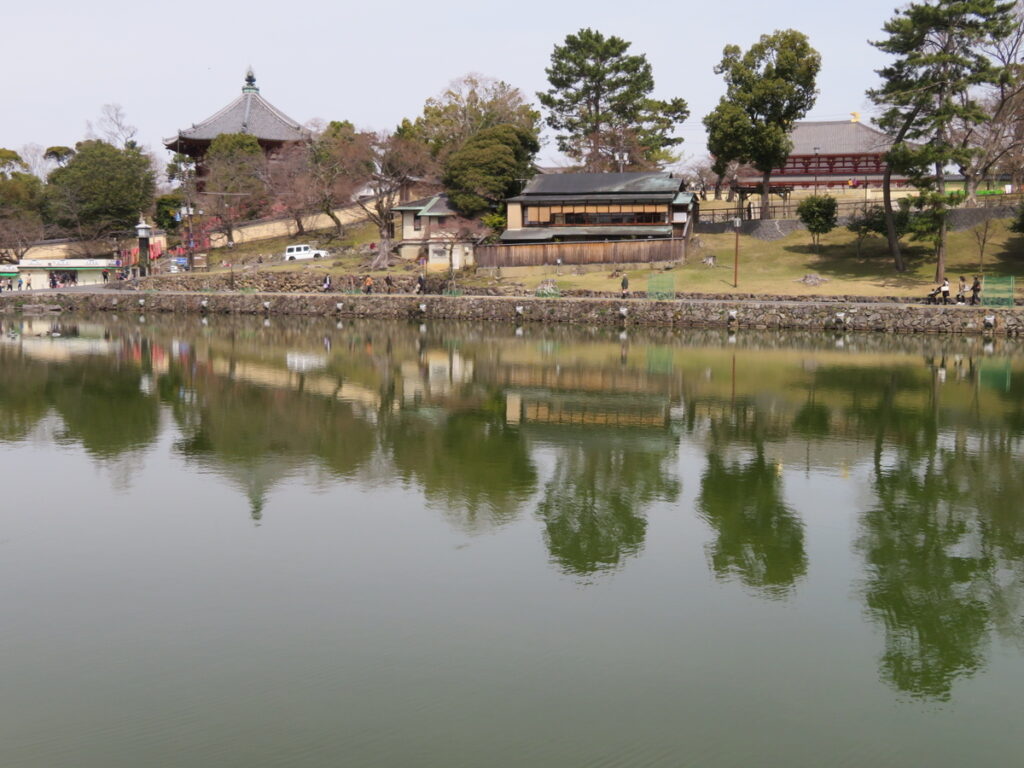
1. Basic Information
Sarusawa Pond, man-made pond was created in 749 as a release pond for the Hojo-e event held by Kofukuji Temple.
Hojo-e is a religious ceremony in which captive creatures are released into the wild to show compassion for all life.
Sanjo Street runs east-west on the north side of the pond, leading from JR Nara Station to Kasuga Taisha Shrine, and from Kintetsu Nara Station to Yasuragi no Michi, an arcade in the middle of Sanjo Street, which is somewhat closer to the Kintetsu line.
To the north of Sarusawa Pond is the five-story pagoda of Kofukuji Temple and the 52 stone steps, the view of which has been designated as a scenic asset by Nara Prefecture.
Currently, the area is maintained as Sarusawa Pond Park and is a place for citizens to relax due to its proximity to the city center; on August 16, 2017, as a first initiative, “Ikeboko” was set up for 10 days only, modeled after Kyoto’s kawadoko (riverbeds) .
2. Highlights of Sarusawa Pond
There are stone steps.
These stone steps, commonly called “fifty-two steps,” lead from Sarusawa Pond to the ruins of the Great Southern Gate of Kofukuji Temple, and as the name suggests, there are fifty-two steps from bottom to top.
As the name implies, there are 52 steps from the bottom to the top.
This is part of the Mahayana Buddhist teaching that there are 52 levels of Bodhisattva practice, starting from the lowest level of faith, mindfulness, and devotion to the highest level of Myokaku (enlightenment).
A Bodhisattva who has attained Myokaku is considered to be an enlightened Buddha who has renounced all worldly desires.
In other words, by the time you climb the stairs and enter Kofuku-ji Temple, you will have already reached the state of Buddhahood.
It is a unique feature of Nara that even an ordinary staircase hides a long history and deep meaning.
3. Sarusawa Pond Seven Mysteries
・not clear
・not muddy
・not coming out
・does not enter
・no frogs
・no algae grows
・seven parts fish, three parts water
The water in Sarusawa Pond is never clear or terribly muddy.
There are no rivers flowing in or out, yet the water is always at a constant level.
There are many turtles, but no frogs. For some reason, no algae grows.
The river is not overflowing with fish, even though the number of fish released every year is constantly increasing.
The pond looks as if it could have more fish than water.
In fact, however, the pond has been constantly covered with blue-green algae in recent years, and the water is green, much to the chagrin of all concerned.
4. Traditional Events
The Uneme Festival is an annual festival held on the day of the harvest moon in mid-autumn (August 15 on the lunar calendar) at the Uneme Shrine, which is the last shrine of Kasuga-taisha Shrine in Nara City, Nara Prefecture and is located northwest of Sarusawa Pond.
Place: Around Saime Shrine and Sarusawa Pond
Rite of Passage:
This festival is said to have started in the Nara period (710-794) as a way to comfort the spirits of the emperor’s favorite mistresses who entered Sarusawa Pond to express their grief over the emperor’s waning interest in them.
It is said to have originated as a memorial service for the spirits of those who had entered Sarusawa Pond, as the nobles of the imperial court presented flower fans decorated with autumn grasses to the imperial court on Tanabata night and floated them on the pond in the garden to enjoy the elegant atmosphere.
5. Details of the festival
・Kangensen Boat Ceremony, Two kangens boats (ryutogashira and gekishu)
The festival is divided into Yoimiya Festival, Hana-fan dedication procession, Hana-fan dedication ritual, and Kangensen boat ceremony.
・Yoimiya Festival
The ritual is held from 5:00 p.m. on the day before the festival.
・Hana-fan dedication procession
Hana-fan dedication procession arriving at Saime Shrine
Around 5:00 p.m. on the day of the Mid-Autumn Moon, a procession of cars carrying hana-fans, children and hana-fan envoys, etc., leaves JR Nara Station, passing through Sanjo-dori, Konishi Sakura-dori, Higashimukai-dori and Mochii-dono-dori to Saime Shrine by Sarusawa Pond.
・Hana-fan dedication ritual
At 6:00 p.m., after the Shinto ritual performed by the priests of Kasuga Taisha Shrine, the hana-fan will be dedicated at the Saime Shrine.
・Kangensen-bune-no-migi
From 7:00 p.m., two kangen boats (Ryutou/Kyukishu) make two laps[2] around Sarusawa Pond, and the hana-fan is thrown into the pond to end the festival.
・Other
Koriyama City has been in contact with Koriyama City in Fukushima Prefecture since the Kofun Period, and the Koriyama Uneme Festival is held there because of the legend of “Saime” that still remains in Koriyama City.
Access
5 min. walk from JR Nara Station or Kintetsu Nara Station.
6. The Legends of Sarusawa Pond
(Not sure if these are true.)
There are many legends associated with Sarusawa Pond.
The Uneme Shrine, located on the banks of Sarusawa Pond, was built to console the woman who entered the pond in grief over the waning of the emperor’s favor.
Ryunosuke Akutagawa’s novel “Ryu” is based on the legend that a dragon ascended to the sky while calling the clouds to rain from Sarusawa Pond.
The name Sarusawa Pond is said to come from the Monkey Pond in the Vaishali country of India. The literal meaning of it refers to a large monkey(or a short-tailed species of monkey).
In Oyodo Town, Nara Prefecture, there is a pond called “Oinoike” where Oino, the daughter of a monk of Kofukuji Temple, is said to have fallen in love with him and threw herself into the water. According to legend, Oino Pond and Sarusawa Pond are connected underground, and Oino’s hat floated in Sarusawa Pond after she threw herself into it.
When the water in the pond turned red in 1959, contrary to the Seven Wonders, there was an uproar that it was the end of the world.
Summary
As mentioned above, Sarusawa Pond is not just an ordinary pond.
Please visit and enjoy the tradition and mysteries.
